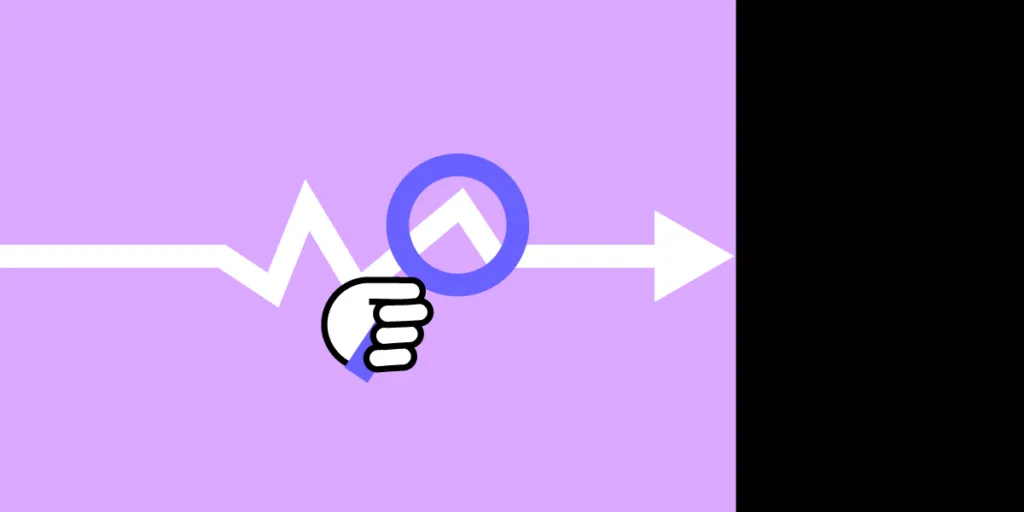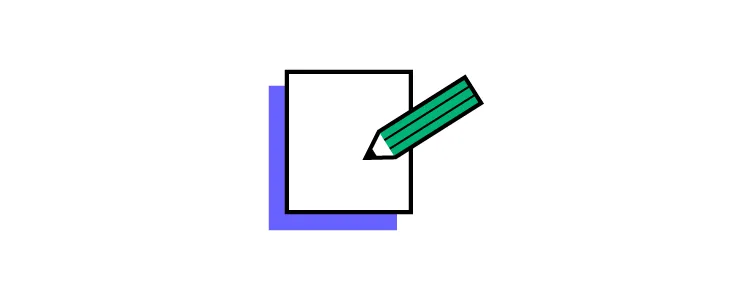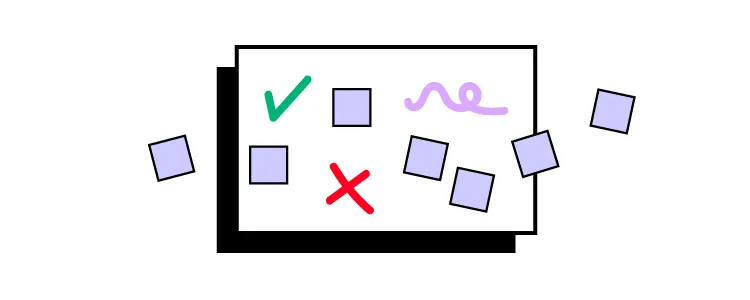Research the Problem: How to Get Started with DesignOps

If your organization is implementing DesignOps for the first time, it’s likely that something isn’t working. The first step is to identify the problems and bottlenecks design teams experience—exactly like you would during early research for your users!
You’re about to read a rewritten chapter of our “DesignOps 101” ebook. Get it for free and learn all that you need to know to launch DesignOps at your organization.
Start with a discovery process:
- Interview design teams to identify common pain points
- Interview stakeholders to find out how design impacts other departments
- Survey designers to find out job satisfaction, workload/productivity, time on task, roadblocks, tool/software satisfaction
Understand that this discovery process will not be simple, especially when you’re trying to find time to interview people already stretched with their duties and responsibilities.
Look for opportunities to sit in with teams, including design, product, and engineering. So you can experience workflows and the challenges people must overcome.
When approaching your research and questions, think about the areas in chapter two where DesignOps is most helpful:
- Seamless collaboration
- Ability to scale the design process
- Managing needs
Look for the places where these core DesignOps responsibilities are most lacking.
In an insightful blog post, first-time DesignOps manager Dave Cunningham interviewed 50+ designers to create five “pillars of focus” to structure his initial research:
- Process—where are the bottlenecks and roadblocks in the design process?
- Tools—what systems and services can optimize speed and execution?
- Knowledge—how do teams share knowledge and work?
- Strategy—how can you amplify existing strategies or implement new ones to optimize workflows?
- Culture—skills pairing, mentoring, education, hiring, and onboarding.
You should also look for problems that most align with your strengths and have the potential to deliver the highest ROI, especially if you are working alone. Avoid taking on a big project you’re unsure of right at the beginning. Focus on the problems you’re most confident at solving first. These early wins will boost your confidence and build trust with your team(s) and stakeholders.
Pro Tip: Get into the habit of organizing and documenting everything from the start. If you’re starting DesignOps in your organization, you’re likely going to be the only person on the DesOps team!
Documenting your initial research will not only provide you with valuable references for your roadmap but help with onboarding or handing over to new DesignOps members later on.
Define the Value: How Will Your Team Benefit From DesignOps
Once you’ve researched and listed the design problems you need to solve; the next step is to assign a value. Where are your organization’s most significant issues, and what is the potential return for fixing these?
Be careful of spending too much time researching the possible return on investment. It’s easy to start trying to come up with detailed solutions to assign value. Also, remember to keep your strengths in mind to solve the problems where you’re most capable and experienced.

Don’t only think of value in monetary terms. Sometimes solving workflow problems will increase job satisfaction and productivity while reducing time to market—ultimately improving business value.
Most importantly, keep your customers front and center when ascribing value. Returning to Dave Cunningham’s example, he used a pyramid system for assigning value with the user value & experience at the top, followed by:
- Design impact – added value to outcomes and user knowledge
- Service standards – design quality, design efficiency & design principals
- Risk reduction – Digital accessibility, content meaning
When you’re evaluating the problems and assigning value, think beyond the UX design department. How will your changes impact the entire organization?
For example, streamlining design system governance processes positively impacts design, product, and engineering teams. This example goes back to a point we made earlier: interview stakeholders to find out how design impacts other departments.
Prioritize And Roadmap: What Does Your Implementation Strategy Look Like
Lastly, it’s time to prioritize the problems you want to solve and pick your first challenge. Answer the following:
- How do you plan to accomplish these goals?
- Who is involved in the process?
- Who are the decision-makers?
- What’s the timeline for implementing change?
- How do you generate buy-in from stakeholders?
- What are your measures of success?
The last point is crucial for your implementation strategy. How do you measure where you are and where you want to be? What are your KPIs to determine if you’re on the right track? How do you report these metrics to teams and stakeholders? And what does success look like?

Use a holistic approach to measuring success rather than a single metric. For example, if you might need to consider several factors and KPIs to measure your strategy’s success, including (but not limited to):
- Time-to-market
- Time-on-task
- Employee retention
- Team member engagement
- Employee happiness/job satisfaction
- Design quality
- Administrative tasks (increase/reduction)
- DesignOps tool adoption
You should also identify KPIs to abandon or pivot your strategies so that you’re continuously improving and evolving DesignOps.
The Nielsen Norman Group has a helpful Initiatives Worksheet for you to visualize the problems you want to solve. The worksheet lists your pain points and three areas to create “impact.”
- Focus Areas: What are the biggest pain points?
- Strategic Goals: What high-level outcomes do you want to create?
- Tactical Goals: What tactics can you try implementing to reach your strategic goals?
You should also assign realistic timelines for implementing each of your initiatives, with relevant metrics and KPIs.
Lastly, consider what DesignOps can do long-term so that designers only have to focus on design! And how would that benefit the organization? DesignOps’ goal is to eventually eliminate all of the tasks, processes, and systems that prevent designers from focusing on design.
If you have a small UX team that doesn’t need a dedicated manager, developing DesignOps thinking is highly beneficial to standardize design processes and workflows.
This DesignOps methodology will lay the foundation for scalability. It’ll also allow someone to step into a DesignOps management role without starting from scratch!
Your Company Isn’t Alone
Some of the biggest teams in the world started thinking about DesignOps from this starting point level.
Airbnb wasn’t always the household name they are today. A DesignOps implementation strategy helped them evolve and expand with agility. The Very Group is another company that created a DesignOps plan and implemented it to facilitate their growth and change during the early months of the COVID pandemic.
“It’s a given that each designer rightly has their own flair, tools and methods when it comes to how they deliver projects — and having that freedom and individuality is a fundamental aspect of creativity.”
Liam Charnock, a senior product developer.

The reality is that as design scales, so do the ways of working—and this is where issues can start to occur.
When we talk about design documentation, we’re not just talking about UI specs and style guides. The growing stack of designer responsibilities results in a rising complexity of design deliverables. DesignOps becomes vital for teams to think about growth, change work processes, and ensure long-term success. Even if the mindset change is difficult, the long-term outcome will be worth the initial challenges.
The Very Group’s DesignOps structure is similar to the outline above but simplified for their work model:
- Design it: When you get desired outcomes and a project goes well, document it to create a process.
- Contextualize: Create a resource framework that serves as the foundation for projects and processes.
- Store it: Set a codified file structure that makes file naming, storage, and finding things later a more seamless process.
Looking Ahead
Once the mindset and team structure are in place, all you need are tools and systems to facilitate the DesignOps process. Discovering what tools and systems will work for your team is the final step to cementing your DesignOps philosophy and workflow on the path to long-term growth and success.
5 Key Takeaways for Getting Started With DesignOps
- Start with a process of discovery to identify the problems. Remember to look beyond the UX department to explore ways DesignOps can help the entire organization.
- Document early to avoid repeating research and processes.
- Measure the value of solving design issues.
- Prioritize problems and create a roadmap.
- Identify the metrics for success and KPIs to pivot or abandon a poor-performing strategy.
Enjoyed the rewritten chapter? Get “DesignOps 101”, read the whole ebook and learn even more about implementing design operations in your organization.

